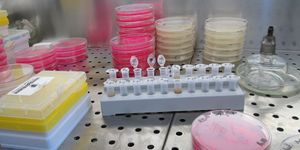Excipients: "Inactive" Drug Components Could Be Functioning Beyond Their Scopes
Excipients are chemical additives to medications. They are incorporated into all kinds of pharmaceuticals to fulfill formulation-related functions while remaining therapeutically inert. However, in a recent study, many of these "inactive" ingredients are found to be biologically active, potentially creating unwanted side effects.
Also known as fillers or diluents, excipients can serve the purpose to enhance the stability of the active drug ingredients (called the APIs), bulk up the drug's solid mass, or improve its acceptance by the human body. For example, the sugary binders, such as sucrose and lactose, can hold all ingredients together in a tablet. Synthetic polymers and gelatin capsules are coating materials designed to protect tablets from airborne humidity and mask the awful tastes of APIs. The disintegrants are excipients that expand and dissolve in specific pH environments. When incorporated in tablets, they accelerate the breakdown of the medications and enhance the absorption of its API.
According to the FDA, which maintains a database of approved excipients, these inactive ingredients are "safe" from the toxicity point of view. Because they are either food-based compounds or showed no outstanding issues in acute toxicology studies. However, this type of assumption creates a blindspot for patients and consumers.
Why Excipient Quality Matters (US Pharmacopeia)
A team of academic and industrial researchers, mainly at the University of California, San Francisco and Novartis Institutes for Biomedical Research in Cambridge, MA, selected over six hundred excipients from the said database and assessed their potential interactions with more than three thousand protein targets in our bodies, using in silico and in vitro testing methods.
Although most excipients can keep their title as inactive ingredients, many of them showed unwanted actions. Their study revealed almost 6% of the tested excipients exhibit activities with at least one target through in vitro assays. Out of the seven ingredients they picked for animal experiments and literature research, two of them can potentially reach a blood concentration that creates physiological consequences. One of them, thimerosal, an organomercury antiseptic, can even compete with dopamine for receptor-specific binding.
The researchers wished to not only lay a groundwork for future investigations into pharmaceutical and health product excipients, but also advocate for examining the use of such chemicals in food and cosmetics.
This latest research is published in the journal Science.
Source: the Scientist









